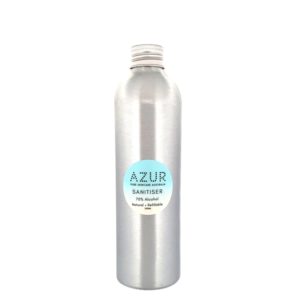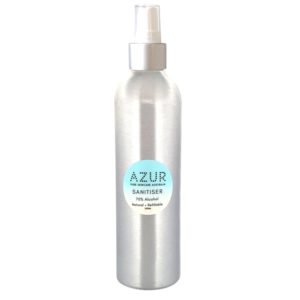You may think that most hand sanitisers contain alcohol and some kind of skin-soothing ingredients, and perhaps a scent. Where can the harm be?
Well, many widely available hand sanitisers contain harmful chemicals that irritate skin and are carcinogenic and hormone disrupting.
Why? Because they’re cheap, they bulk out the products, and / or because they create the qualities, scents and textures that big companies think customers want.
List of Harmful Ingredients to Avoid in Hand Sanitisers
Here are some common harmful chemical ingredients to look out for and avoid when you’re choosing a hand sanitiser, and explanations as to why they are bad for your health.
1. Fragrance
Research shows fragrance ingredients are classified as allergens, hormone disruptors, asthma triggers, neurotoxins and carcinogens. Manufacturers are not required to specify fragrance ingredients on product labels so there’s no way to know if they are harmful chemicals. Opt for natural fragrances from essential oils.
2. Phthalates
Phthalates are a family of industrial chemicals used as solvents in cosmetics and other consumer products, often added to products with artificial fragrance to keep the scent from fading. Phthalates can damage the liver, kidneys, lungs, and reproductive system.
3. Sodium Lauryl Sulfate / Sodium Laureth Sulfate
SLS and SLES are often found in hand sanitiser. These ‘surfactants’ are used as cleansing and foaming agents because they lower the surface tension between ingredients. There’s a lot of controversy and health risks associated with SLS that range from skin, lung and eye irritation to organ toxicity, endocrine disruption and cancer.
4. Triclosan
Triclosan (sometimes labelled triclocarban or TCS) is often found in ‘antibacterial’ products. Research has shown that triclosan alters hormone regulation in animals, and it has been associated with cancer, liver damage and the development of antibiotic-resistant germs. The chemicals, triclosan and triclocarban, have been banned by the US FDA but are still legal in Australia.
5. Parabens
Parabens are synthetic preservatives used to stop microbial growth like fungus and bacteria from growing in liquids, lotions and creams and help extend shelf life. They are linked to a multitude of health risks including cancer, endocrine disruption, reproductive toxicity, neurotoxicity and skin irritation. Avoid ingredients ending in ‘paraben’ such as propylparaben. They should not be necessary in hand sanitisers which have a high alcohol content.
How to keep your hands sanitised and healthy on the go
To ensure you don’t need to use any sanitisers offered in shops and restaurants that aren’t entirely natural and chemical-free, the best solution is to carry a safe natural portable hand sanitiser with you at all times in your bag, car, pocket, etc.
Natural hand sanitiser that’s eco friendly too
Azur’s Natural Refillable Hand Sanitiser is plant-based, cruelty free, vegan and toxin-free. The uplifting sweet citrus scent comes from Australian lemon myrtle essential oil, and it’s packaged in sleek lightweight refillable aluminium bottles. You can keep a small portable 30ml bottle in your bag, and refill from the larger 250ml bottle when you need. It only contains three ingredients and they’re all natural; 70% alcohol, aloe vera and lemon myrtle essential oil.
Perfect for clean healthy hands on the go!
Hand Wash vs Sanitiser
Remember to wash your hands with soap when you have the option, above using sanitiser, as even the best sanitisers can be drying with excessive use. You can find out more about washing vs sanitising for killing viruses here: What’s Better Hand Wash or Hand Sanitiser.
Further information on harmful ingredients
Check out resources like EWG’s Product Ratings for ingredients and their safety ratings, and to find non-toxic and environmentally responsible products and ingredients.
Stay safe and healthy everyone.
Sources:
- Mayo Clinic https://www.mayoclinic.org/healthy-lifestyle/adult-health/expert-answers/triclosan/faq-20057861
- EWG https://www.ewg.org/skindeep/




